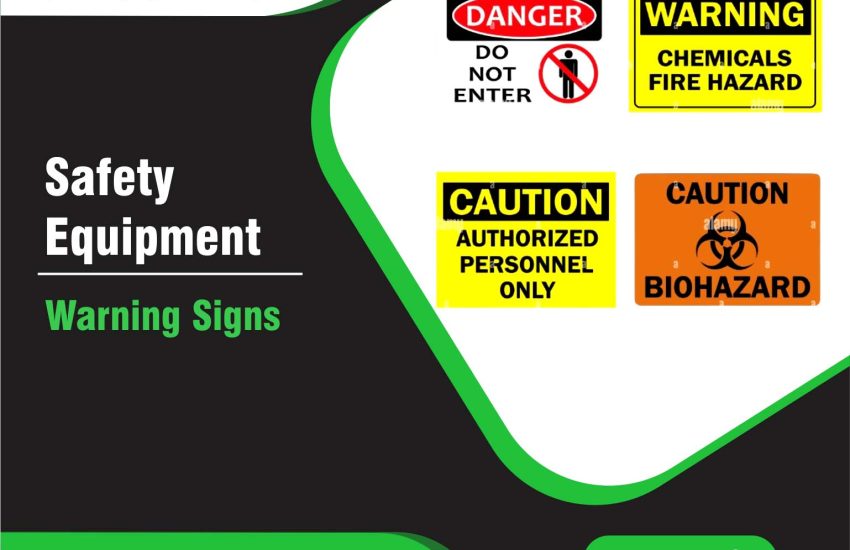Warning and Danger Signs are essential in various industries to alert individuals to potential hazards and ensure safety in workplaces, public spaces, and residential areas. These signs play a crucial role in preventing accidents and injuries, contributing to the maintenance of a safe environment. In this article, we will explore the importance of warning and danger signs, their specifications, and the key features that make them effective.
Importance of Warning and Danger Signs
Warning and danger signs provide clear indications of potential hazards, allowing individuals to take preventive measures before encountering dangerous situations. These signs are vital for safeguarding workers, pedestrians, and residents, particularly in environments such as construction sites, factories, chemical plants, and highways. By offering early warnings, these signs reduce the risk of accidents and enhance overall safety.
Types of Warning and Danger Signs
1. Warning Signs
Warning signs notify individuals of potential hazards that may not immediately be life-threatening but could cause injury or damage if proper precautions are not taken. These signs typically feature a yellow background with black text or symbols.
2. Danger Signs
Danger signs indicate severe hazards that may lead to serious injury or even death. These signs usually have a red background with black or white text or symbols, making them easily noticeable. Danger signs are typically used in environments where immediate action is required, such as near electrical equipment, toxic chemicals, or heavy machinery.
3. Caution Signs
Caution signs warn of less serious hazards but still demand attention. These signs generally feature a yellow background with black text or symbols.
4. Emergency Signs
Emergency signs guide individuals to exits, fire alarms, and emergency equipment, ensuring a safe and quick evacuation during emergencies. These signs usually have green or white backgrounds with easy-to-understand symbols.
Specifications of Warning and Danger Signs
When selecting warning and danger signs, it is essential to ensure they meet certain criteria to be effective. Below are the key specifications to consider:
1. Visibility and Size
- Size: Warning and danger signs should be large enough to be visible from a distance. The size typically depends on the area where the sign is placed. In high-traffic areas, larger signs may be required.
- Color: The color is crucial for visibility and importance. Red, yellow, black, and green are commonly used because of their high contrast and ability to catch attention.
2. Materials
- Durability: Signs should be made from durable materials such as aluminum, plastic, or stainless steel to withstand weather conditions, UV rays, and moisture.
- Reflective Materials: Reflective or photoluminescent materials ensure that signs remain visible at night or in low-light conditions, particularly in areas such as highways or industrial zones.
3. Legibility
- Text: The font used should be clear and large enough to be readable from a distance. Simple, legible fonts without excessive decoration are essential for easy reading.
- Symbols and Icons: Standardized symbols and icons convey messages quickly and universally. The International Organization for Standardization (ISO) sets standards for symbols on safety signs to ensure consistency.
4. Compliance with Standards
Warning and danger signs must adhere to local, national, and international safety regulations. For example, the Occupational Safety and Health Administration (OSHA) provides guidelines for safety signs in the workplace in the U.S. Compliance ensures that the signs meet required specifications, helping to avoid penalties and ensuring safety standards.
5. Placement and Positioning
- Strategic Location: The placement of warning and danger signs is critical to ensure they are noticed. Signs should be positioned in high-risk areas such as near machinery, electrical panels, or construction zones.
- Height and Angle: Signs should be positioned at eye level, ensuring visibility for people of all heights. They should also be angled to avoid obstructions.
Key Features of Warning and Danger Signs
The effectiveness of warning and danger signs relies heavily on their design and features. Below are the key elements that make these signs functional and impactful:
1. Clarity and Simplicity
- Clear Messaging: The message on a warning or danger sign should be direct and concise, making it easy for people to understand quickly. Phrases like “Caution,” “Danger,” or “High Voltage” help convey the severity of the hazard.
- Simplicity: Avoid overcrowding the sign with unnecessary information. A straightforward and clear message will make the sign more effective.
2. Use of Icons and Pictograms
- Visual Representation: In many cases, symbols are more effective than words, especially for individuals who speak different languages. Universal symbols, like skulls for poisonous substances or exclamation marks for general hazards, can enhance understanding.
- ISO Symbols: Internationally standardized symbols promote consistency across different regions and industries, ensuring that safety instructions are universally understood.
3. Durability for Long-Term Use
- Weather Resistance: Outdoor warning and danger signs must withstand harsh weather conditions, such as rain, snow, and strong winds. Durable materials like vinyl, plastic, or metal are ideal for this purpose.
- Fade Resistance: To maintain visibility over time, the ink and materials used should be fade-resistant and protected from UV rays.
4. Reflective and Glow-in-the-Dark Options
- Nighttime Visibility: Reflective signs, along with glow-in-the-dark options, are especially important in low-light conditions. These features ensure that the message remains visible at night or in dimly lit areas like warehouses or construction zones.
Conclusion
Warning and danger signs play a critical role in maintaining safety across various environments, including workplaces and public spaces. By adhering to the proper specifications, such as visibility, legibility, and compliance with regulations, businesses can significantly reduce the risk of accidents and injuries. Moreover, the use of clear messaging, durable materials, and reflective features makes these signs vital tools for protecting individuals and preventing hazardous situations. Whether it’s a warning sign for machinery, a danger sign near hazardous chemicals, or an emergency sign guiding people to exits, these safety symbols are essential in ensuring a secure and safe environment.


